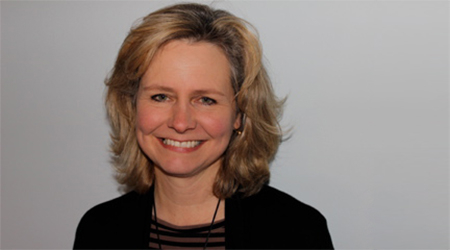Today's centralized, medicalized system of care is unequipped to handle the surge of patients with "diseases of despair," such as substance abuse, states a recent report.
Given nursing's history, it makes sense to arm nurses with the tools they need to step in and address the unmet public health crisis of diseases of despair in the 21st century, according to Patricia Pittman, PhD, FAAN, author of the report and co-director of the George Washington University Health Workforce Institute. Pittman analyzed the literature and interviewed nurse leaders, policymakers and others to write the report, "Activating Nursing to Address Unmet Needs in the 21st Century," released March 12, 2019, by the Robert Wood Johnson Foundation.
Looking back at public health and nursing
Nursing has long played a role in public health activism, Pittman said. [caption id="attachment_55553" align="alignleft" width="300"] Patricia Pittman, PhD, FAAN[/caption] "Between 1910 and 1930, particularly coming out of New York and spreading all across the country, there were nurses who were visiting the tenements," she said. "They were doing not just well-baby and well-mother care, but also all kinds of activities in collaboration with social workers to ensure families had sufficient food, transportation; access to hospital care when needed; opportunities for job training; and adequate clothes. "They really approached health in a very holistic way, which we would call now the social determinants of health," she continued. "They were a significant component of the healthcare system at that time." Metropolitan Life Insurance Company paid public health nurses in the U.S. to do this kind of work because it extended people's lives. That led to the country's first federally-funded healthcare program -- the Sheppard-Towner Act, created in 1921, which focused on maternal and child healthcare. "That was really the pinnacle of the influence of nursing in our country," she said.
Patricia Pittman, PhD, FAAN[/caption] "Between 1910 and 1930, particularly coming out of New York and spreading all across the country, there were nurses who were visiting the tenements," she said. "They were doing not just well-baby and well-mother care, but also all kinds of activities in collaboration with social workers to ensure families had sufficient food, transportation; access to hospital care when needed; opportunities for job training; and adequate clothes. "They really approached health in a very holistic way, which we would call now the social determinants of health," she continued. "They were a significant component of the healthcare system at that time." Metropolitan Life Insurance Company paid public health nurses in the U.S. to do this kind of work because it extended people's lives. That led to the country's first federally-funded healthcare program -- the Sheppard-Towner Act, created in 1921, which focused on maternal and child healthcare. "That was really the pinnacle of the influence of nursing in our country," she said.
But a series of historical forces conspired against nurses' work in the subsequent decade, pushing nursing into a more subordinate role where they were tasked with clinical duties to support physician roles, Pittman said.
By 1929, Pittman wrote, the medical profession had mounted a campaign against the maternal-child programs of the Sheppard-Towner Act leading to the act's repeal and a reallocation of funds to American Medical Association priorities. "That was a significant blow to the funding for this kind of work," Pittman said. "Then, as private prepaid health insurance emerged in the late '30s and '40s, Metropolitan Life Insurance began to back out of the contracts with these independent nurses arguing that the prepaid health insurance should pick up those services. Of course, you know that traditional health insurance benefits do not, for the most part, cover home visits and those kinds of wrap-around services that were more holistic." By the 1940s, a major expansion of hospitals concerned physicians at the time who worried about maintaining their independence. Physicians saw nurses as loyal auxiliaries to them in the hospital setting.
And with the start of Medicare in 1965, physicians' economic stature climbed as their wages basically doubled because Medicare created a guaranteed payment system for fee-for-service, according to Pittman.
"That also created a growing gap between nurses and physicians," she said. The results was what Pittman calls the "passive-ication" of nurses. "There was a resurgence of that in the 1960s with the Women's Movement and the creation of the nurse practitioner profession," she said. "But overall, the mainstream healthcare system effectively sort of marginalized nurses into subordinate roles."
Fast forward to today's diseases of despair
There is growing recognition the medical model anchored by a centralized hospital model is inadequate to deal with the epidemiological situation facing many Americans today, Pittman said.
"We actually are losing life expectancy in this country and many other countries are surging ahead in terms of life expectancy," she said. "We know this is related to not just issues of obesity and chronic disease but the kinds of illnesses that have been termed 'diseases of despair.' In other words, this is a uniquely social phenomenon -- something you can't cure with penicillin."
Those who do not think diseases of despair are an issue need only look at what happened in recent years at the Department of Defense, according to the report. "In 2017, the Defense Authorization Act authorized the addition of another 20,000 troops on top of existing accession requirements," Pittman wrote. "However, a study by Spoehr and Handy (2018) demonstrated how difficult this will be. Among 17-to-24-year-olds eligible for recruitment, 59% are not qualified because of a health conditions (obesity, substance abuse, mental health problems and asthma)." The problem is not only a threat to national security but also the strength of the U.S. workforce, according to Pittman.
"More and more employers recognize that economic growth is simply not going to happen unless we begin to address the social determinants of the health of our workforce," she said. "I think this is a critical moment when the nation began to understand how serious this problem was and how ill-equipped our current healthcare system is to deal with these kinds of problems."
Time to look in nursing's direction
There are many things going on today that make it a good time to make big changes in healthcare. Payment reform is one of the larger issues. But there are smaller ones, including changes in the physician workforce. It has become more female and more of today's physicians are employed, as opposed to being self-employed. Innovation in technology is giving patients more control over their healthcare and is facilitating decentralization, according to Pittman.
"This is no longer the physician and hospital-centric century," Pittman said. "It may be a century that is nursing's time to make a different contribution."
The report's central thesis is it's time to look at what nursing was and to give nurses the tools to do more of that kind of work, according to Pittman. That work is beginning. Nurses are developing, leading and participating in programs aimed at addressing diseases of despair. "Nurses' experiences over the years are being held up as examples of where the healthcare system should go," Pittman said. "There's a terrific program called the American Academy of Nursing Edge Runner Series, which awards evidence-based, nurse-led programs. It really shows the breadth of projects and programs that nurses are developing to try to address issues of population health, social determinants of health and issues of equity." Although the report aims to start the conversations among nurse leaders, policymakers, employers and educators needed to ramp up nursing's role in population health, it also is the background paper for the new National Academy of Medicine Committee on the Future of Nursing 2020- 2030, Pittman said. According to Pittman, the conversations needed to take nursing to the next level include:
- How do we ensure nursing schools are adequately educating the nurse workforce to be able to do these kinds of roles?
- How can we incentivize employers to be able to create the kinds of jobs that would allow them to do these functions?
- How can we encourage nurses to embrace looking at the intersection of other professions?
"Nurses have always worked in teams but there was a special magic in that partnership with social work," Pittman said. "I think the challenge is -- frankly from my perspective -- for nurses not to reproduce a dominant professional model but to think about how to create an alternative model that really embraces working at the intersections with other professions in finding solutions that are innovative and are out-of-the-box thinking, compared to what we've been doing for the last 50 years or so."
Take these courses about public health and diseases of despair:
Population Health: Small Steps Creating Greater Reach (1 contact hr) Population health takes a broad view that looks beyond a group of patients or clients in a practice setting and considers a group of people in a similar geographical area or those with a similar disease or health need. It is described as a bridge between healthcare and public health, representing elements of each area and providing opportunities to use the skills of health professionals in both. This module discusses what population health is, whom population health interventions reach, and the role nurses have in population health. Exercise for Health and Fitness (1 contact hr) Regular exercise presents many benefits to a society that suffers from an epidemic of obesity and chronic illnesses. Elements of exercise and safety guidelines are presented to empower people to implement exercise into their daily habits. Depression and Suicide: Risk Factors, Diagnosis and Treatment (1.5 contact hrs) Based on national health surveys, one out of 20 Americans over the age of 12 report experiencing depression within the past year. There is concern about the rising incidents of depression and suicide among adults ages 24-59. The World Health Organization states depression is third in the global burden of disease and projects that by 2030 it will be first. In the U.S., 41,149 people died by suicide in 2013. The number of suicide attempts -- 25 times higher than actual suicides -- is of grave concern. Early detection, assessment, and effective intervention are vital in caring for patients with medical illnesses who may also be suffering from depression. Patients with medical illness are at risk for depression, and depression may be complicating treatment and the ability to recuperate effectively. Underdiagnosed and undertreated depression may be taking an enormous toll on the resources of both the patient and the family.






